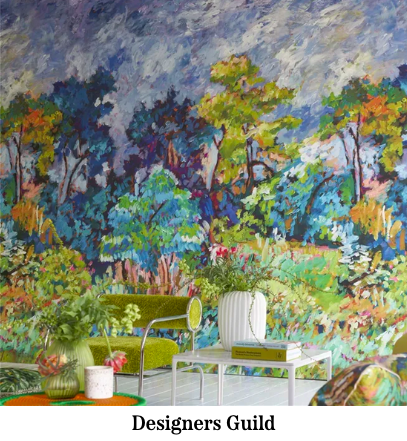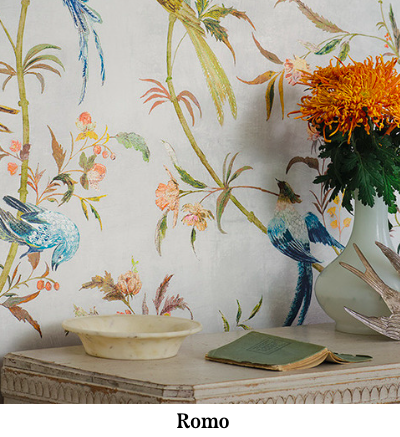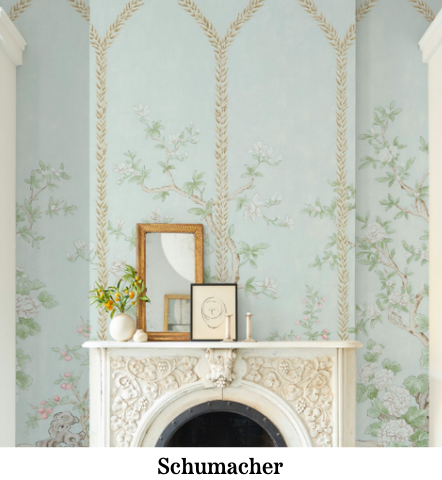The Perfect Wallpaper
Wallpaper is the dressing that sets your room apart, giving it a personality far beyond a simple paint job. With thousands of patterns, textures and colors in our library, we welcome the public and trade professionals to browse samples that can be checked out and tried in your home.
Wallpaper is a beautiful addition to any space in your home, but before you fall in love with a paper, you want to make sure its features are suited to your application so that it will hold up to whatever your life dishes out.
- Material: Wallpaper can be made of natural or synthetic materials. Natural materials include paper, raffia, seagrass, hemp, jute, sisal, recycled paper, cork, linen, and leather. Synthetic wallpapers are made of vinyl with a variety of backing options. While vinyl options are traditionally easier to clean because they're wipeable and scrubbable with soap and water, some wallpapers made of natural materials can be treated to be stain resistant or coated to allow them to be wipeable. Wallpaper can also be smooth or textured which impacts the way it's cleaned and also how it looks on the wall.
- Appearance: Solid color or irregularly patterned wallpapers are easier to purchase and install because no accommodation needs to be made for pattern repeats or placement. This is called random match wallpaper. Alternatively, calculating the wallpaper required becomes significantly more important when a wallpaper has a pattern or is a mural design. Drop match means that the pattern lines up the same at the ceiling on different rolls of paper. Half drop means it will take 3 strips or panels to complete the design. Multiple drop match means it will take 4+ strips or panels to complete the design. Because it has to be lined up both horizontally and vertically, any sort of drop match paper will result in greater waste and a need to round up your order.
- Installation Location: Consider the location of where the wallpaper will be hanging. You may want to avoid more delicate grasscloth options in high traffic areas. Alternatively, areas that are exposed to moisture and humidity, like kitchens and full bathrooms, do better with vinyl options that resist water damage and the growth of mold. However, there are natural materials, like linen, that can be woven and backed with breathable materials that also make them suitable to environments prone to moisture.
- Installation Method: Traditionally, wallpaper has been installed with paste that is applied either to the paper or the wall before hanging. Newer peel-and-stick and removable options offer alternatives that may allow paper to be installed in areas that were previously out of reach, like rental properties.
- How It's Priced: Unfortunately, wallpaper companies package and market their papers in different ways, making it very challenging to compare apples-to-apples when it comes to pricing. Wallpaper is often sold by the roll. The width will be set, and then each roll will have a specific number of inches, yards, or meters. A double roll is essentially one physical roll with double the length of a single roll. Sometimes you may buy 10 rolls of paper but receive 5 physical rolls because the single rolls have been combined. Other companies will sell paper by the foot, meter, or yard, and there is usually a minimum length required. Very few companies allow you to order by the yard with no minimum, but this can be a great option for small spaces as it avoids waste.



















